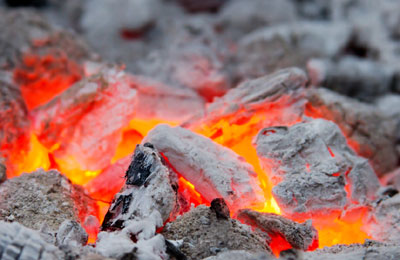
When coal goes up, gold comes down
, February 14, 2013
By Marcus Holland
China and India, the world’s two most populous countries, are having to endure the coldest winter in decades this year. As a result, there has been a tremendous demand placed for greater production of coal.
Each country uses coal for a wide range of end uses, which is only increasing the demand for it as a heat source due to the cold weather.
Historically, as coal has risen in price, gold has fallen. Given the increasing demand for coal and the resultant rise in prices, gold prices should continue to fall.
That is to be expected based on the traditional inverse trading relationship due to the economic forces behind the price direction of each commodity. Coal, like copper, goes towards industrial end uses. When an economy is booming, there is a tremendous demand for coal. It is needed for power and heating uses for factories, office buildings, and homes.
This is particularly true in emerging market economies such as China and India. Coal provides about 80 per cent of the electricity in China. It is the main fuel for the industrial power of the People’s Republic.
Coal also provides for the heat and cooking needs of the consumer class in India, China, Japan and Russia.
While natural gas is expanding in use in North America and replacing coal, it still is a main fuel source for many developing countries. Natural gas requires three sets of pipelines to take it from the ground to the business or home. This pipeline network is severely lacking in India and China. By contrast, coal can be hauled in a sack by a single person to be used for cooking or heating at their home.
As a result, coal is a commodity that rises with the strength of an economy in a developing country. Greater amounts are needed to generate power for the factories, office buildings, and homes of a growing nation. Like copper, it rises in price with the output of a nation.
Gold, by contrast, is most attractive when an economy is weak. As legendary financier Jim Rogers stated, a weak currency is a sign of a weak economy, which is the sign of a weak government. When an economy is weak, so is its paper money. As a result, gold becomes an attractive substitute for the fiat currency of that nation.
That is why gold has doubled in cost over the period of the Great Recession while the price of coal has fallen more than 50 per cent. Declining economic growth around the world resulted in less demand for coal.
As central bankers reacted to the Great Recession by printing massive amounts of currency in rounds of quantitative easing, gold soared due to the expectations that inflation would debase the value of paper money around the world.
But now there is more coal needed due to the record cold in China and India. As a result, the price of coal is surging. Based on the inverse relationship, gold is falling. History teaches us that this trend should continue for the coal/gold trading posture.
* This article is writtern by Marcus Holland from FinancialSpreadBetting.net







